This blow-by-blow comparison shows how Tidal and Deezer differ in pricing, music discovery, audio quality, and more.
Tidal and Deezer are established platforms in the music streaming field. They’re both great alternatives to the industry giants if you’re looking for niche features.
However, deciding between the two can be difficult. Each has its own strengths, such as Tidal’s larger music catalog and Deezer’s wider availability in over 185 countries.
Fortunately, you only need to understand what kind of features and content each platform provides to know which one best suits your listening habits. In this article, we’ll review everything Tidal and Deezer have to offer, so read on to find out which service is for you!
The Overview
Tidal
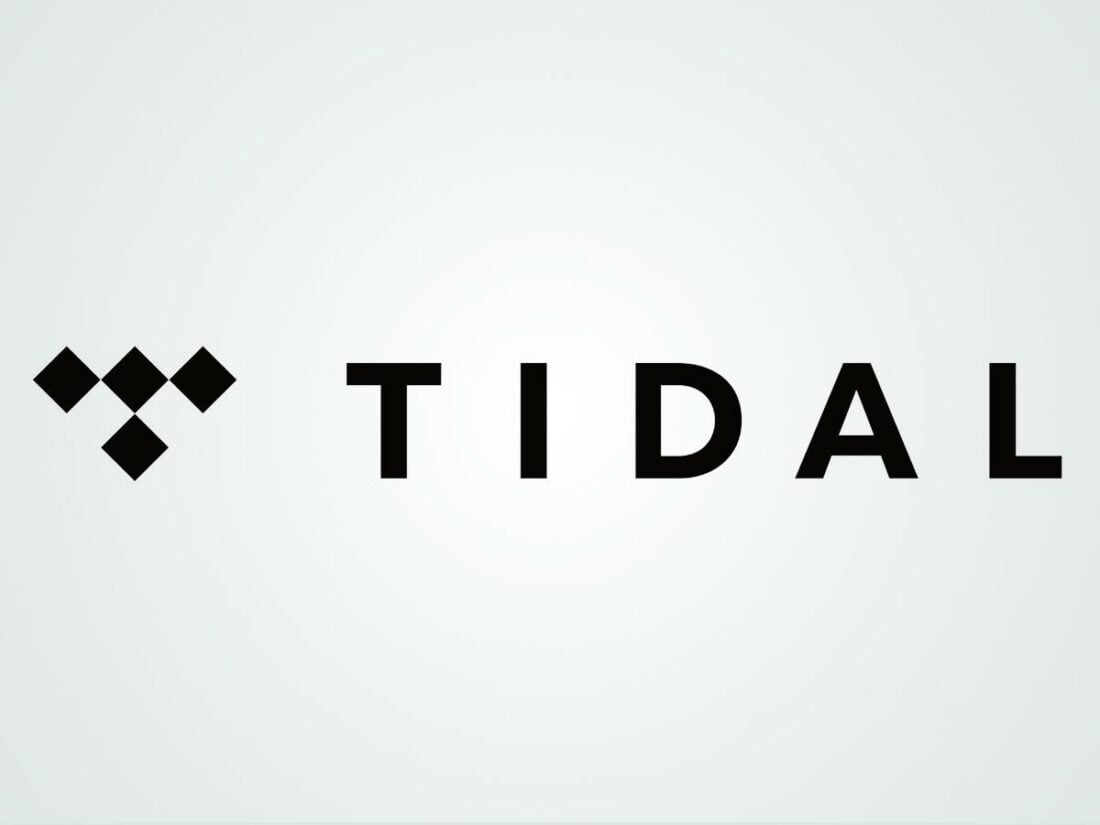
Tidal is a music streaming service that was originally launched in 2014 by the Norwegian-Swedish tech company Aspiro. It was later acquired in 2015 by Project Panther Bidco, a holding company owned by the rapper Jay-Z. The platform was artist-owned, meaning that some larger artists had a stake in the company.
Tidal is available in 61 countries, with over 100 million tracks currently available for streaming, as well as exclusive releases, music videos, interviews, live streams, and events.
In terms of users, the exact numbers are not publicly available. The last official statistics released showed three million subscribers in 2016, but these numbers have been disputed, with some sources suggesting the actual number may have been as low as 350k.
Deezer
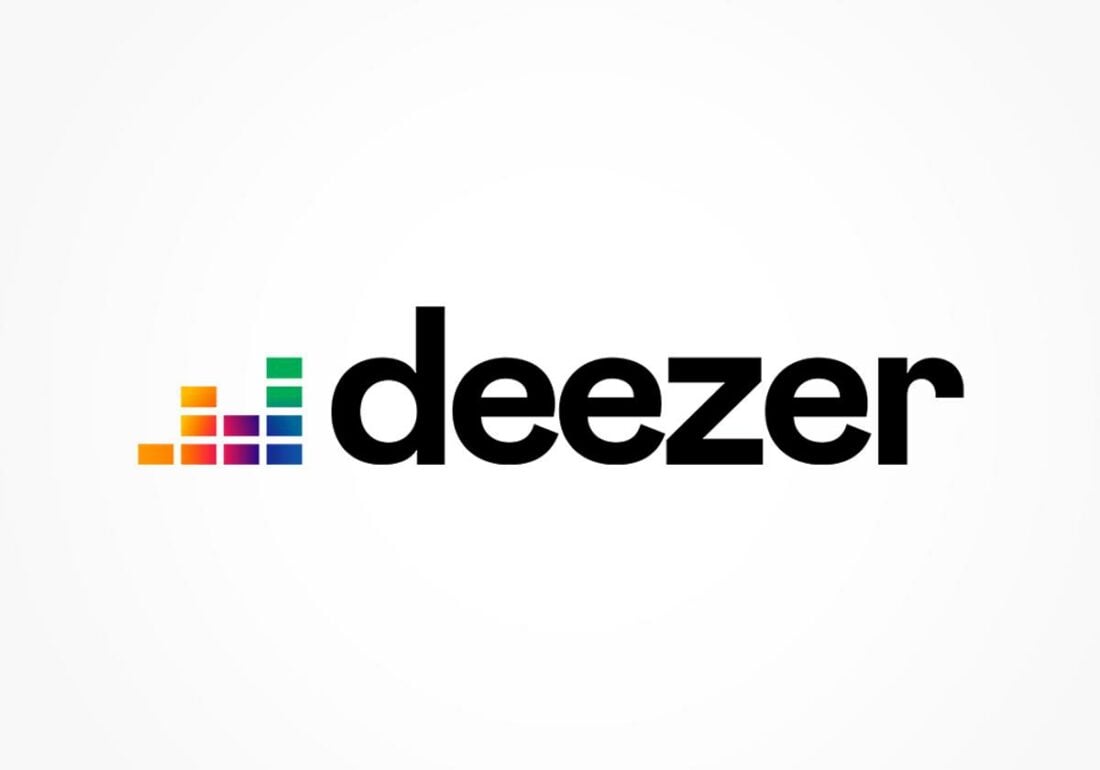
Deezer is a music and podcast streaming service launched in France in 2007 by Daniel Marhely.
The service is available in more than 185 countries to an audience of 16 million active monthly listeners. There’s a catalog of more than 90 million songs, as well as thousands of podcasts and radio stations available to stream.
Premium Plans and Pricing
A major factor to consider when choosing a music streaming service is the price point. Everyone wants the best value for their money, so it’s essential to find a plan that offers the features you need at a price that fits your budget.
Here are the similarities and differences between the premium plans for Deezer and Tidal:
| Platform | Free Plan | Individual Premium | Family Plan | Student Plan | Other |
|---|---|---|---|---|---|
| Tidal | Yes, but only in the USA | HiFi: $9.99/month HiFi Plus: $19.99/month | HiFi Family: $14.99/month HiFi Plus Family: $29.99/month (up to six family members) | Student HiFi: $4.99/month | Military and First Responder HiFi: $5.99/month Military and First Responder HiFi Plus: $11.99/month |
| Deezer | Yes | $10.99/month | $17.99/month | No separate plan, just a 50% discount on Deezer Premium. | Deezer HiFi is incorporated into Premium and Family plans. |
In addition to these premium options, each service offers other plans tailored to different user needs.
Deezer Free is a limited version of the service available for free. You can access the entire Deezer library as well as personalized recommendations but with regular adverts between tracks. However, the sound quality is lower, you can’t download songs for offline listening, and you have limited skips on some playlists.
Tidal HiFi Plus is a more expensive premium plan ($19.99/month) that gives you access to higher quality audio formats. It won’t change anything else about your streaming experience, so this is a tier more suited to audiophiles.
Tidal also offers a Student Plan, which provides a HiFi or a HiFi Plus subscription at half-price for eligible US college and high-school students. This needs to be verified via SheerID every twelve months.
Finally, both Deezer and Tidal offer a Family Plan, which lets you have up to six accounts on one subscription at a significant discount ($17.99 and $14.99 a month, respectively). You can set up restrictions on children’s accounts to ensure that their music is age-appropriate.
Verdict: Which is more worth it?
In terms of price, Deezer’s Individual and Family plans are slightly more expensive than Tidal’s HiFi plans. Both platforms offer free plans, but with restricted availability. And while these plans are limited, they’re still a good option for anyone who can’t afford a subscription or for casual listeners.
Both platforms offer lossless audio quality on their basic premium plans. However, Tidal offers even higher, audiophile-level quality with their HiFi Plus plans. It also has a larger library of music, which means you’re getting access to more music.
Additionally, there are more premium plans available on Tidal, which means the service can be much better value for money if you’re a student, military or ex-military, or a first responder.
Who Has Better Content?
Another important factor when choosing a streaming service is the quality of the content available on the platform. After all, there’s no point in paying for music or podcasts that you don’t enjoy.
Let’s compare the content available on each platform.
Amount of music content
Tidal has a larger content library than Deezer, with over 100 million tracks available compared to Deezer’s 90 million.
This isn’t actually very noticeable when using the services, as they both offer a wide selection of music. There’s a good mix of popular songs and soundtracks, as well as niche artists. Most of the time, you shouldn’t have a problem with missing music on either platform.
However, there are a few newer niche tracks and artists available on Tidal that you won’t find on Deezer, such as Astriid, Braindown, and GOM.
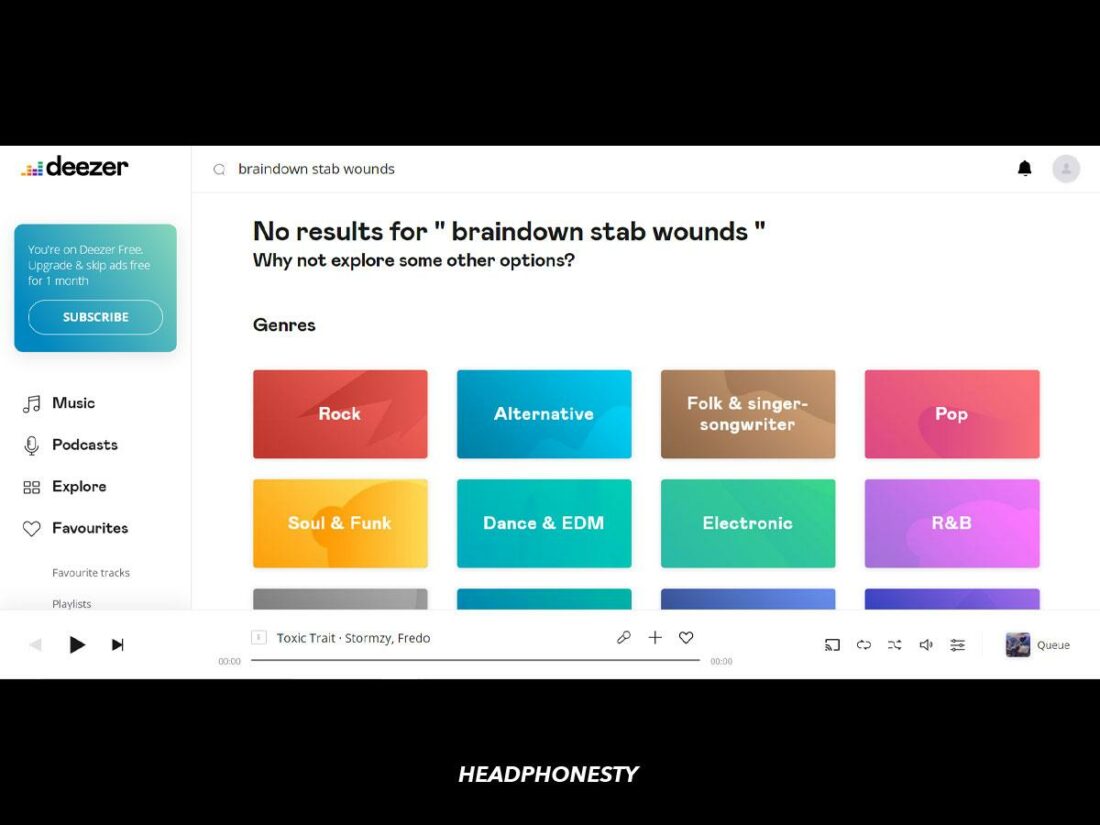
Additionally, each platform has its own exclusive content. Deezer has Deezer Originals, containing exclusive tracks and covers and often promoting minority artists. On the other hand, Tidal contains exclusive content from large artists, such as Beyoncé and Jay-Z.
Content variety
Music isn’t the only content you might look for on a streaming service. Many people also enjoy non-music tracks (such as ASMR, white noise, and nature sounds), podcasts, music videos, live radio, and more.
Non-music tracks are available on both Tidal and Deezer. However, there does seem to be more non-music content on Deezer. For instance, ASMR is categorized into its own channel, and there are lots of curated playlists available.
Tidal, on the other hand, tends to prioritize music over other tracks. For example, searching for ASMR or white noise will result in music at the top of the results.
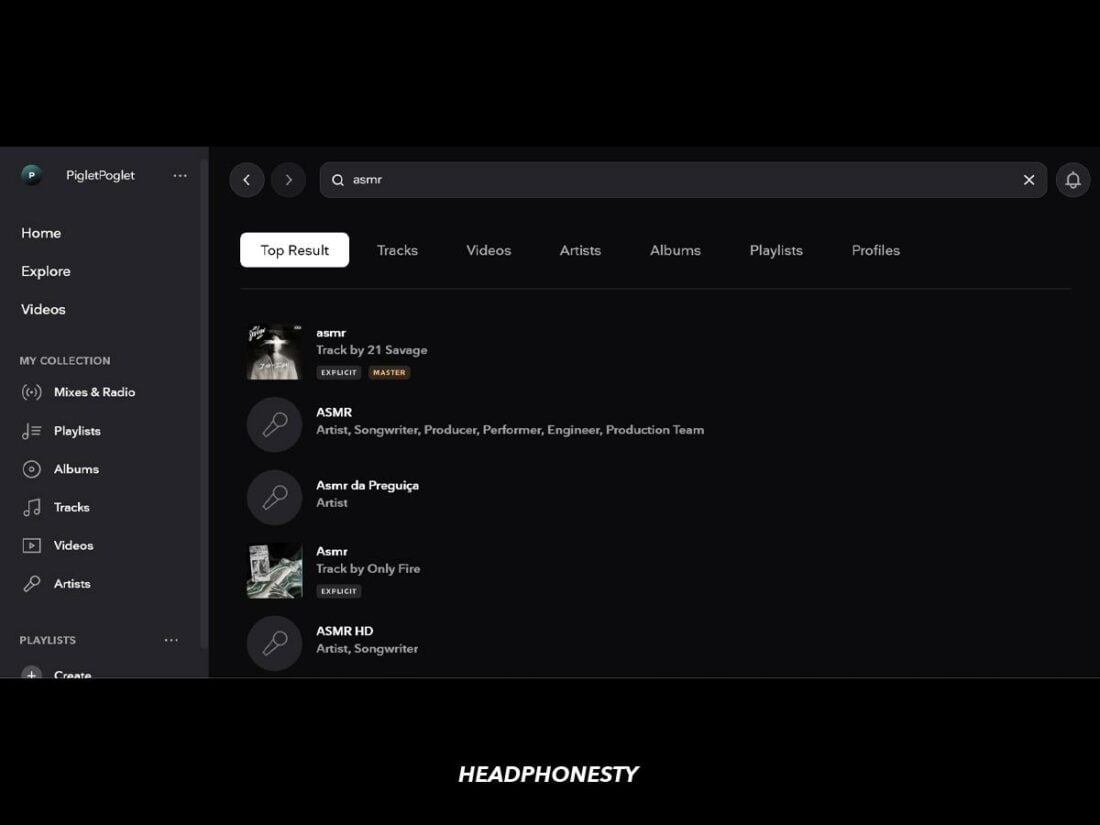
Both platforms also offer podcasts. Again, Deezer offers a wider variety than Tidal, with more than 160,000 podcasts compared to Tidal’s limited selection. They’re also much easier to find, with their own tab in the sidebar.
There’s live content and radio on both platforms, with exclusive live streams, and Tidal Live that lets users host their own radio show and act as a DJ. Deezer also offers live radio stations you can tune into at any time, as well as catch up on past shows.
When it comes to music videos, however, they’re only offered on Tidal. There’s a selection of more than 650,000 high-quality videos available to stream on the platform.
Verdict: Which is more worth it?
Though I found that Deezer was the winner in this category, this rating is pretty subjective, and it was a close call.
The wider variety of non-music content and podcasts puts Deezer above Tidal purely as an audio streaming service. However, if you’re looking for a broader musical experience, then the music videos available on Tidal will probably be more of a priority for you.
Additionally, if you’re into more niche music, Tidal’s larger content library might be important. Especially in genres with a lot of smaller artists, such as death metal and hyperpop, you’re likely to run into a missing track or two when transitioning from larger platforms like Spotify.
Audio Quality
Something that lots of people look for in a streaming service is audio quality options. This lets you choose between a high-quality audio type when you’re looking for better sound and a low-quality audio type when you want to save on data.
Here are the audio quality settings available on Tidal and Deezer:
| Audio quality setting | Tidal | Deezer |
|---|---|---|
| Basic | N/A | 64 Kbps |
| Normal / Standard | 160 Kbps | 128 Kbps |
| High / Better | 320 Kbps | 320 Kbps |
| HiFi | 1,411 Kbps (lossless) | 1,411 Kbps (lossless) |
| Master | 2304-9216 Kbps | N/A |
So, how noticeable is the difference in audio quality? We tested the different tiers using the Sony WF-1000XM4 earbuds with an internet speed of 15 Mbps.
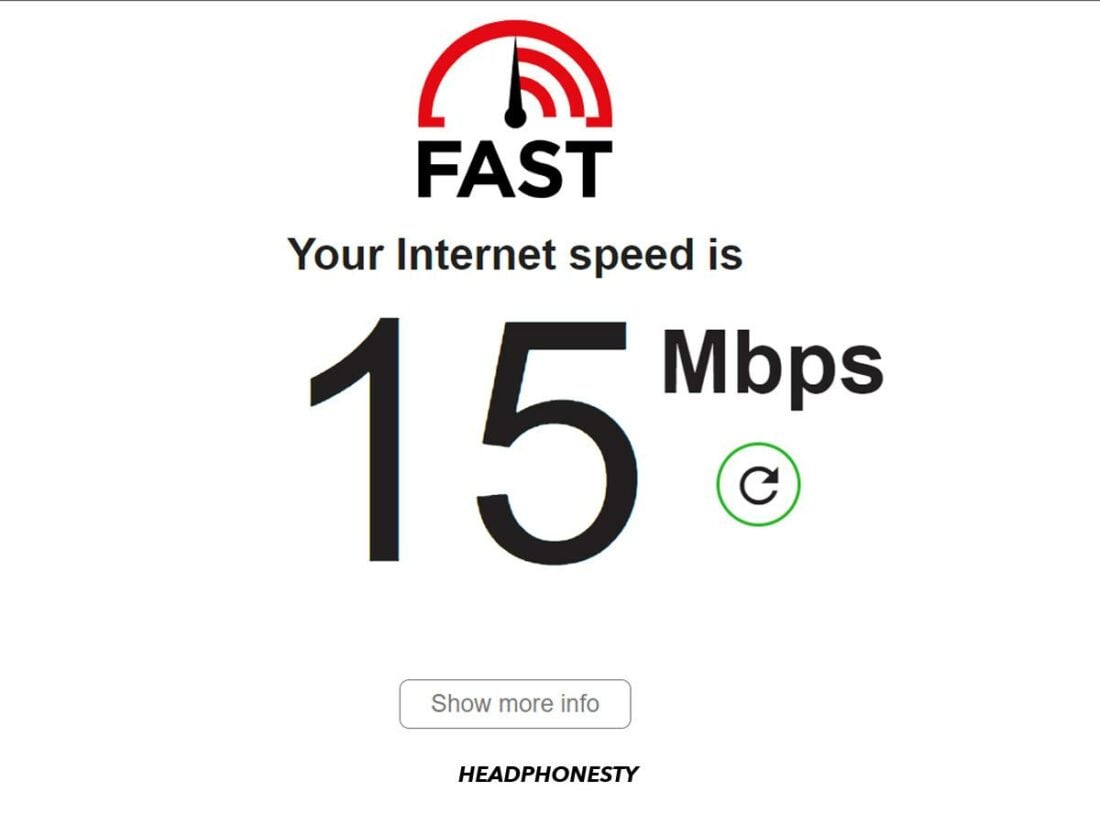
Switching from Normal to HiFi audio quality brings a noticeable improvement in the sound. The soundstage– your perception of the music and instruments in space– is much wider, which lets you appreciate the smaller nuances and individual instruments in the track. Additionally, the lower ranges are stronger and punchier, resulting in a more distinct difference between the bass and midrange.
The Master tier on Tidal also made a difference, especially when it came to vocals. You can hear more texture in the performer’s voice, and background vocals and harmonics are easier to pick from the instrumentals. However, it wasn’t a huge difference, so this is only worth considering if you’re an audiophile.
Furthermore, the Master audio quality uses hi-res FLAC files, which are large and can take a while to load.
Loading times
Another consideration of audio quality is the loading times when streaming. Higher-quality files will take longer to load to your device.
I should point out that the loading times aren’t long on either service, never surpassing a second in the time I’ve been using the platforms. However, there are differences in how each platform seems to load tracks.
On Deezer, you might experience a delay at the start of a track. You can then seamlessly skip through the track. With Tidal, there isn’t a loading time when switching between tracks. However, there’s a noticeable delay if you want to jump to a point in the song.
Verdict: Which is more worth it?
Though there are diminishing returns when it comes to higher audio qualities, having the option of Master quality audio puts Tidal above Deezer in this section.
Additionally, because Deezer Free puts limits on your audio quality, not everyone who uses the service will be able to access hi-res tracks.
Music Discovery
Streaming services are a great way to find new music, which is why most streaming platforms have implemented music discovery features. That makes music discovery an important factor to consider when choosing a service.
Tidal and Deezer have quite different methods for music discovery. However, both are pretty effective.
Tidal uses the more traditional method of music recommendations, providing you with daily discovery mixes and algorithmic recommendations in your playlists, some of which are human-curated.
The algorithm is pretty good, in my experience– there’s a good mix of similar music and fresher tracks that can widen your listening habits. The human curation adds a nice personal touch to the recommended playlists, as they can capture a more specific mood or genre than the machine-learning.
While Deezer does offer plenty of discovery playlists and personalized mixes, it also offers a more experimental method of music discovery: Deezer Flow.
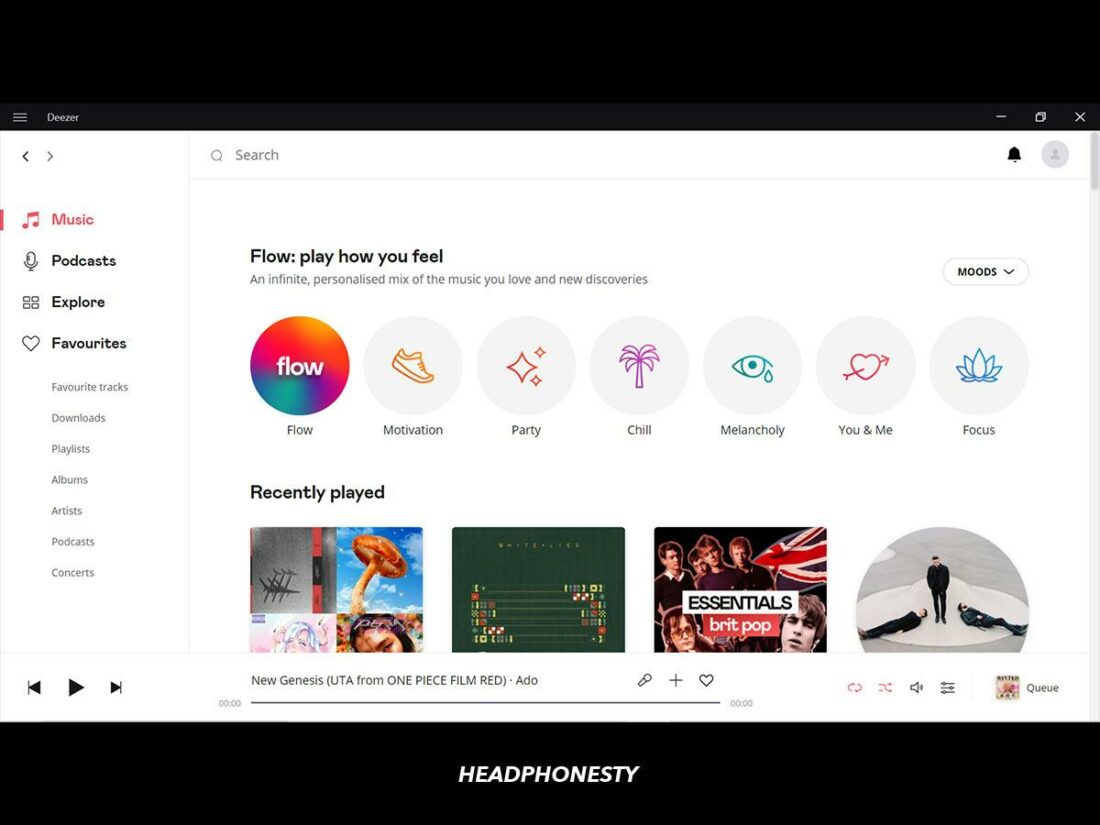
This is an endless mix of tracks based on your listening history, favorite artists, albums, and tracks, and the songs you skip or ban. You can filter it based on mood or genre and even create a new mix based on one track, thanks to collaborative filtering– an algorithm based on the reactions of other users with similar tastes.
Additionally, both platforms have an Explore tab you can use to browse through genres and moods to find new playlists. They’re both pretty expansive, though Deezer offers a wider choice of content. There are more playlist options in each category, so you can refine your search further and choose a playlist based on more niche sub-genres.
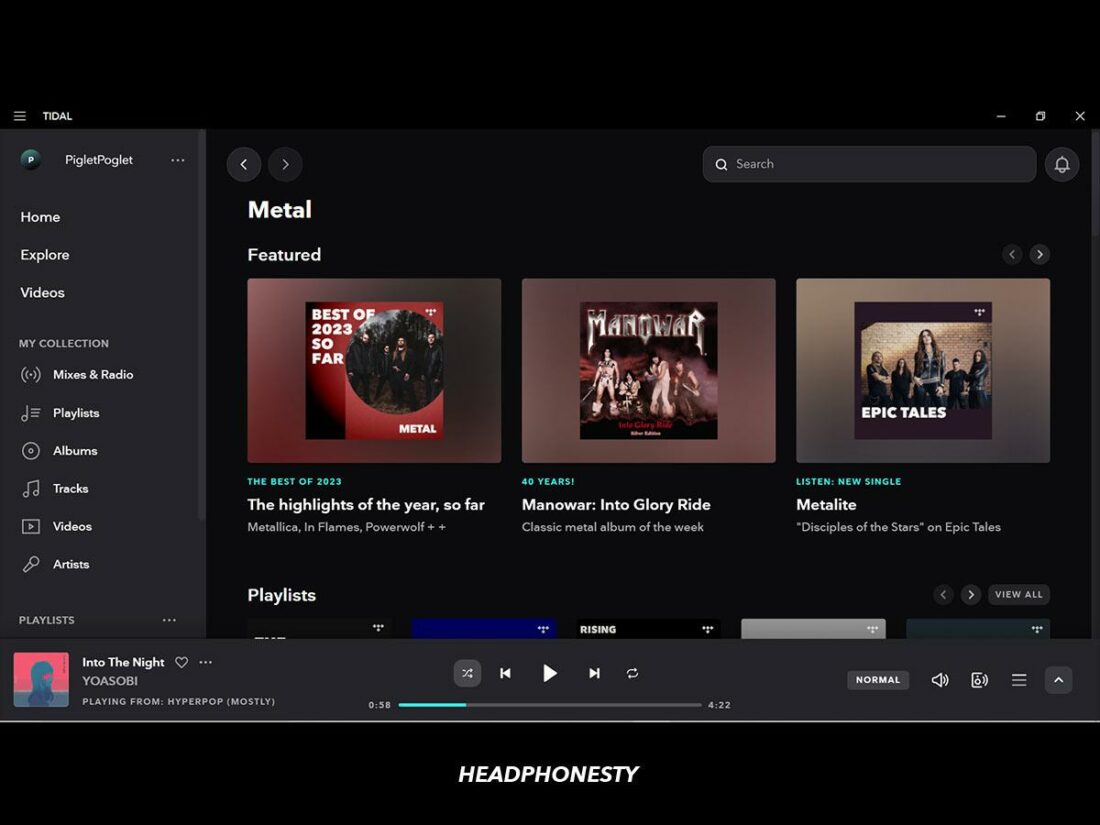
However, Tidal recommends playlists, tracks, artists, albums, and videos on their Explore tab, while Deezer sticks to just playlists. This gives you a wider variety of content to discover if you find a genre you like.
Verdict: Which is more worth it?
Both platforms are pretty good for music discovery, but Deezer has more options to choose from when looking for more music.
Additionally, the endless nature of Deezer Flow means that you’re not limited to one or two personal mixes each day, so if you’re in the mood to look for more music, you aren’t limited by the length of a playlist.
Ease of Use
Especially for a new customer, the user interface is a crucial part of the service. If the app is hard to navigate and inconvenient, you won’t want to regularly use the platform.
Desktop apps
There isn’t anything particularly stand-out about the desktop apps for Deezer and Tidal. They both follow the same basic layout of a sidebar used to navigate the app and a search bar at the top of the screen.
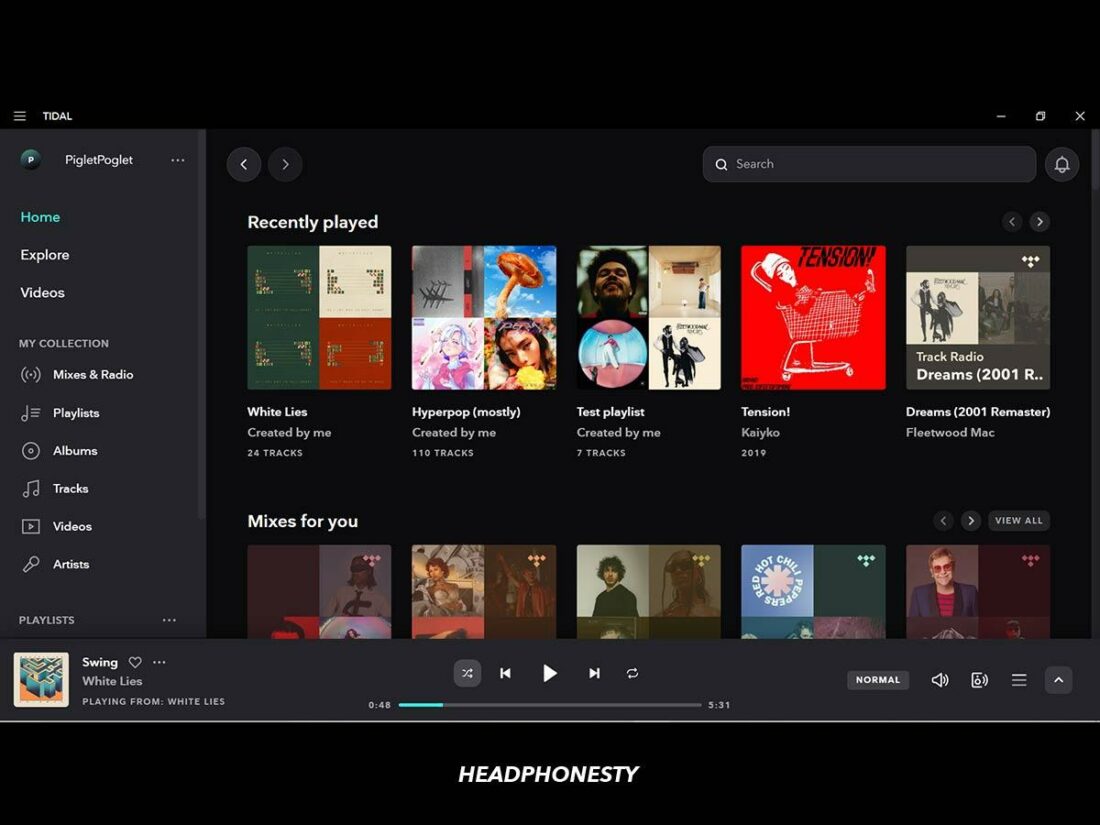
The biggest difference between the applications is that Tidal’s homepage shows your recently played tracks, albums, and playlists, which is convenient if you regularly listen to the same playlists. On the other hand, Deezer’s homepage is dedicated to music discovery, which can be useful if you’re often looking for new music.
Another notable difference is that the Favorites subsections on Deezer’s sidebar expand into the main screen when you click on one of the tabs. This can feel a little cluttered, especially as the menu takes up the whole screen and is still available in the sidebar.
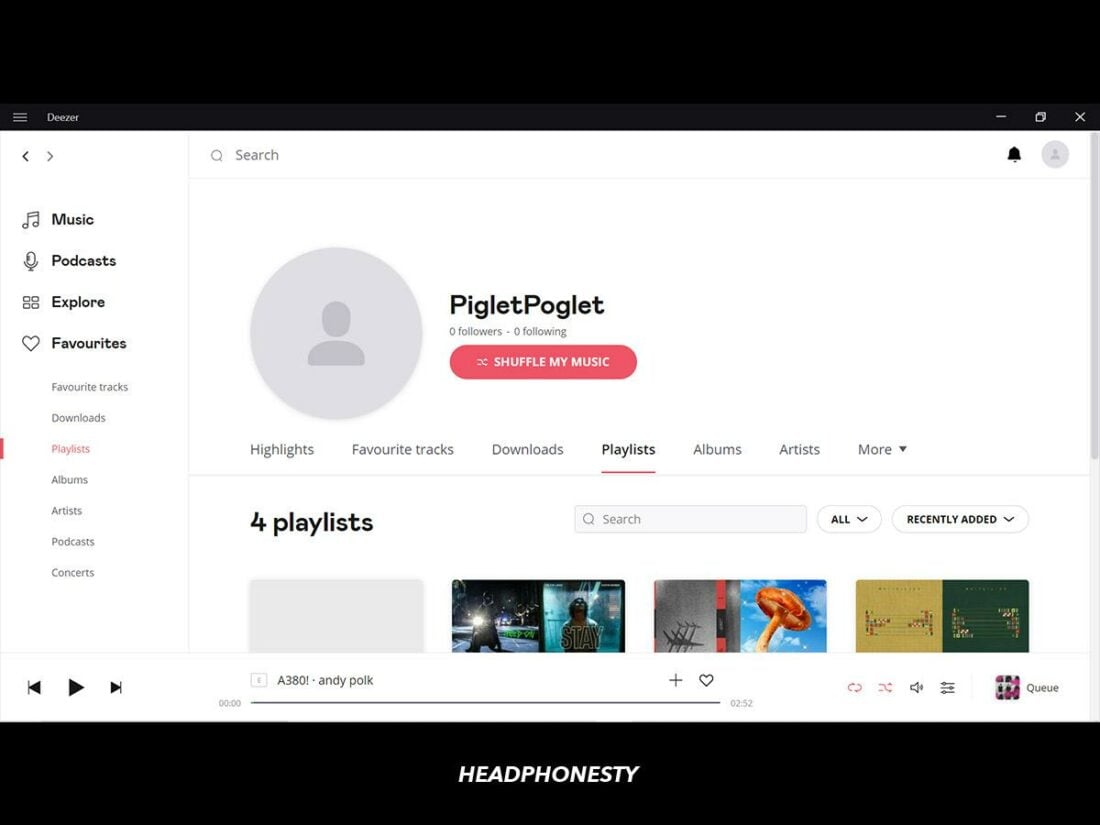
Overall, Tidal feels a little slicker and more modern. The interface fits better to the screen and is faster and more convenient to click through. For instance, hovering over a playlist brings up the option to press play straight from your home screen, while on Deezer, you have to click through to the playlist’s own screen.
Mobile apps
Once again, the Tidal and Deezer mobile apps are quite similar to each other. You can use the bottom bar to navigate the app, switch between tabs, and access the search bar.
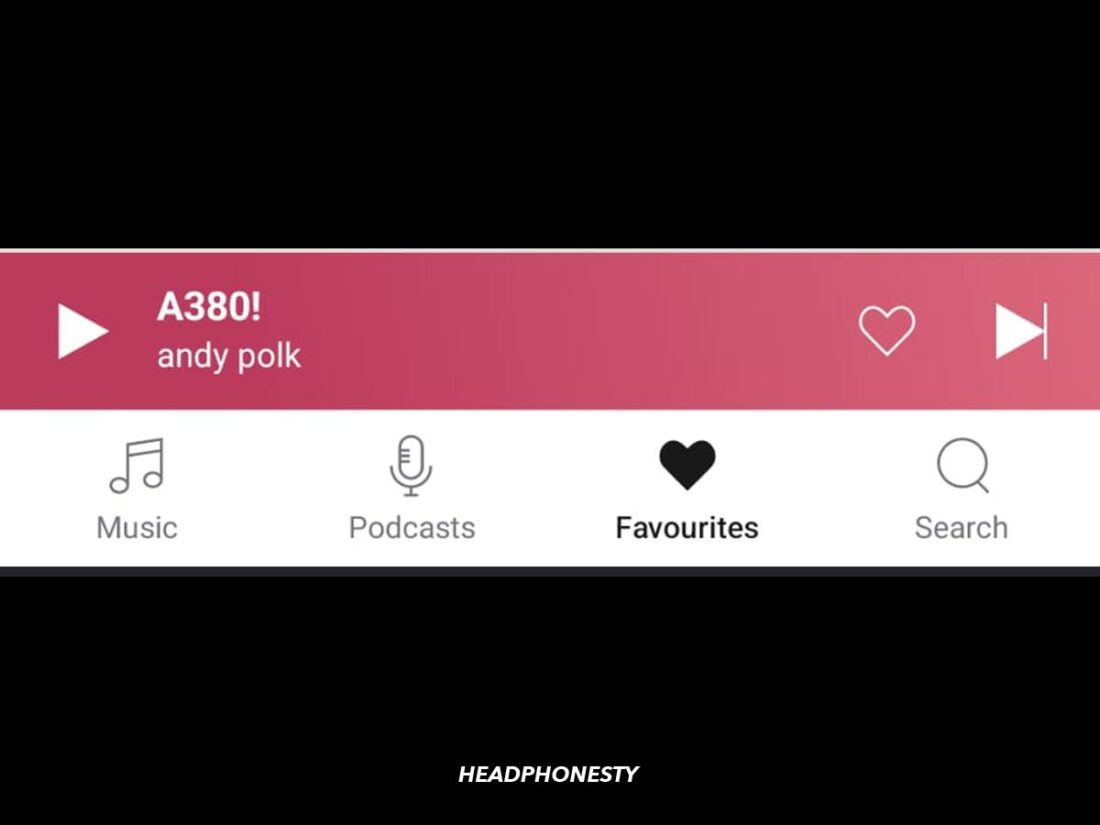
In the Deezer mobile app, you do have access to your recently played tracks, albums, and playlists on the homepage, as well as your personalized recommendations and Deezer Flow. This is also where you can explore their music catalog. Podcasts have their separate tab on the bottom bar.
The Favourites tab is where you’ll find your library and favorite tracks and artists. This tab feels a little clunky, as you need to tap through to different tabs to access different sections of your library.
Finally, you can access the search bar from the Search tab. From here, you can check out your search history and trending searches and browse through a limited number of popular genres and categories.
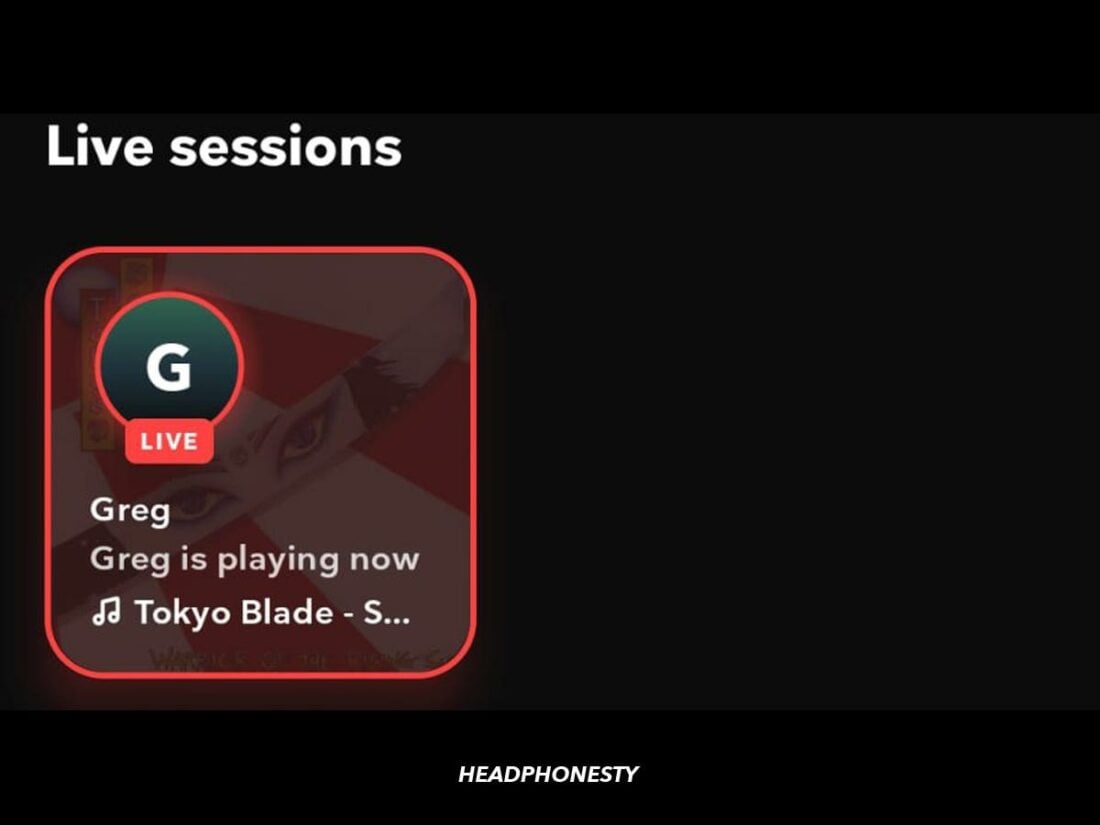
The Tidal mobile app is very similar to Deezer, though the Podcasts tab is replaced by a Videos tab. There’s also a section on the home screen containing live streams, which is nice to open the app to if you’re late to a stream you wanted to catch.
The tab you use to access your library is called your Account tab, not your Favorites, but it operates in the same way. You tap on the tab in the bottom bar and select which section of your library you want to browse.
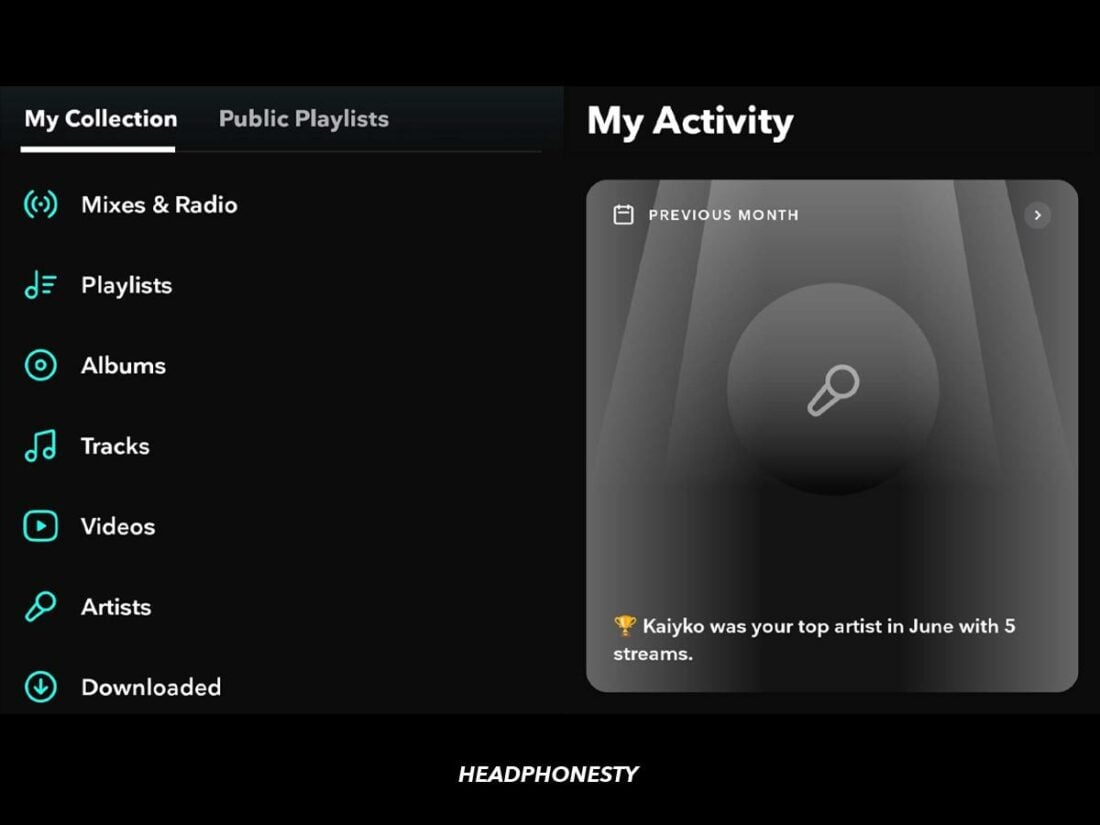
This is a little smoother on Tidal in terms of the interface, as the tabs used to access your library are larger and have symbols that let you skim for the section you want. Still, the multiple tabs system is a clunky and quite inconvenient way to access your library when on a smaller phone screen.
Additionally, there’s an extra tab focused on your stats, activity, and streaming history. This can be interesting, but it doesn’t seem to need a whole tab, especially when the Account tab is so cluttered.
Verdict: Which is more worth it?
Honestly, there isn’t a major difference between the two platforms in terms of ease of use. Tidal is just a little smoother and more convenient and just feels more modern and up-to-date. However, neither platform is outstanding in ease of use, nor are there any major issues that could affect your streaming experience.
Additional Features
There are some additional features in a streaming service that can improve your experience or act as a nice bonus to consider when choosing a platform. Let’s look at what features you can find on Deezer and Tidal.
- Lyrics
- Equalizer
- Voice commands
- Casting and supported devices
- Local files
- Year in review
- In-app social functions
- Tidal Magazine
- Deezer SongCatcher
Lyrics
One feature common on streaming services is integrated lyrics, often synced with the music playing.
Both Deezer and Tidal have this as an option when streaming. It’s a little more convenient with Deezer, as you can choose a track with a microphone symbol next to it and click on the same icon from the bottom bar when the song is playing.
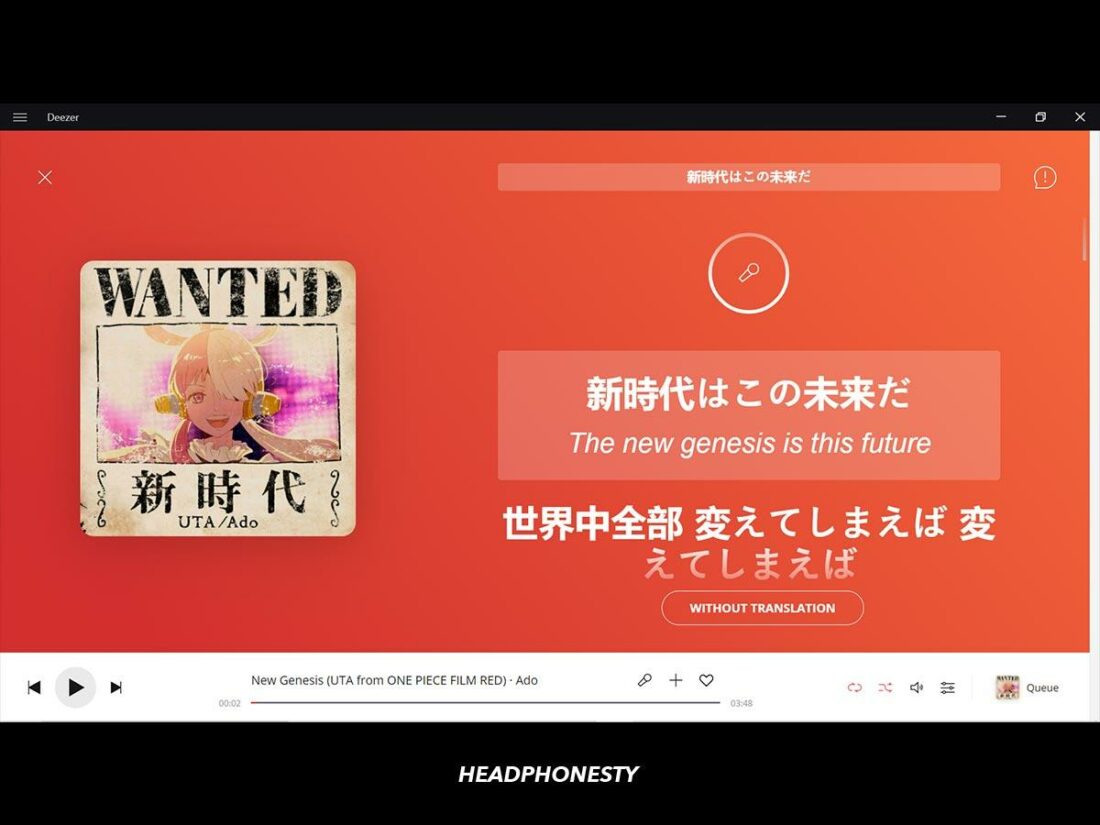
On Tidal, you need to click on the upwards pointing arrow at the right of the bottom bar and choose the lyrics tab. However, this does give you a chance to check out some extra stats, such as the credits on the track, suggested tracks, and your play queue.
Equalizer
Another feature you might expect with a streaming service is an built-in equalizer so you can adjust the levels in your music to your tastes. Deezer supports an equalizer if your device has one already, allowing you to adjust the equalization of your audio from the app and offering several preset options.
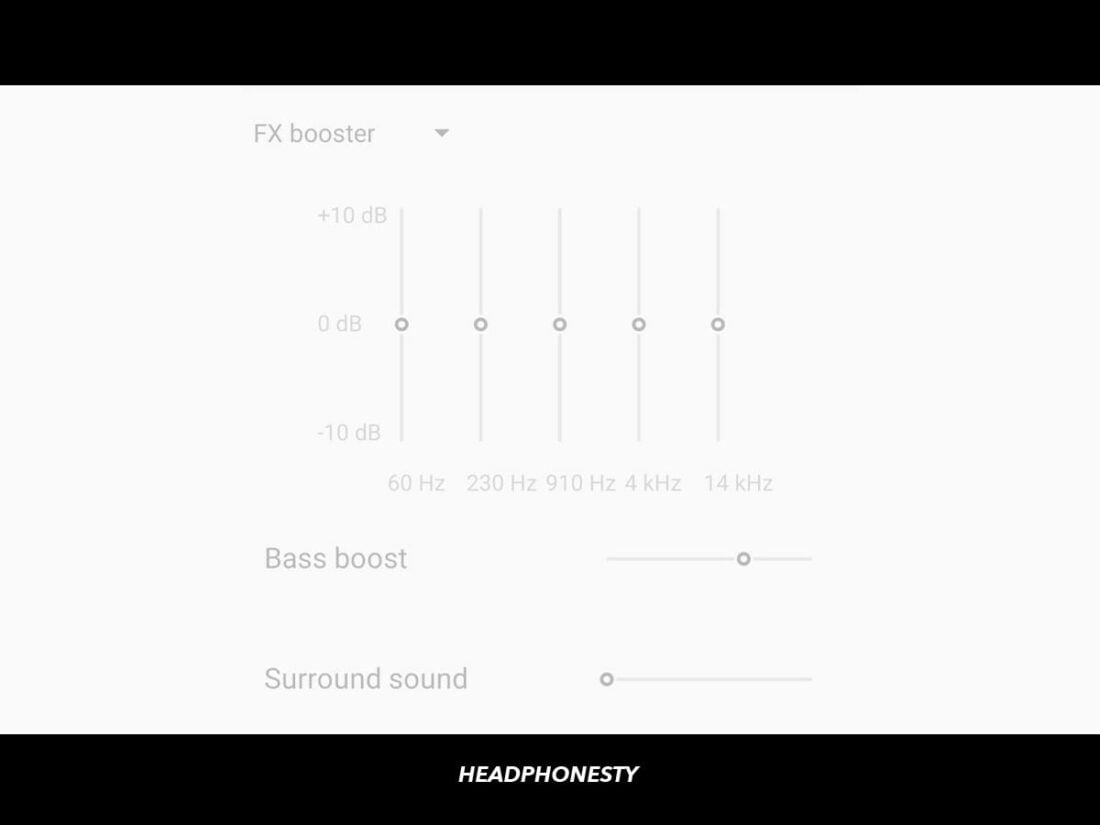
Tidal, on the other hand, doesn’t have an equalizer feature. You can sign up for another equalizer service– like CapTune, which is officially partnered with Tidal– but outside services can need an additional purchase.
Voice commands
Voice control is something lots of people look for when streaming music, especially when using home control devices like Google Home or Amazon Echo. Both services can be used with common voice assistants, such as Siri and Alexa. However, Tidal doesn’t work with Google Assistant.
Casting and supported devices
A common use of a streaming service is to cast your music to a supported device, like your speaker, smart TV, or car sound system. This lets you share music with friends without relying on the speakers on your phone or laptop.
There’s a long list of compatible devices for both Deezer and Tidal. However, Tidal offers more integration options with a lot more brands, such as Naim, Roon, and Cambridge Audio, especially when it comes to speakers.
Local files
Lots of people also look to upload their own local files to their streaming service so they can be integrated with the rest of their music. This is an option on Deezer, where you can upload any MP3 to the service as long as you have a Premium account. Unfortunately, local files are not available on Tidal.
Year in review
Since Spotify launched Spotify Wrapped in 2017, many streaming platforms have followed suit. An end-of-year review is a common feature on music streaming services, and Deezer and Tidal aren’t an exception.
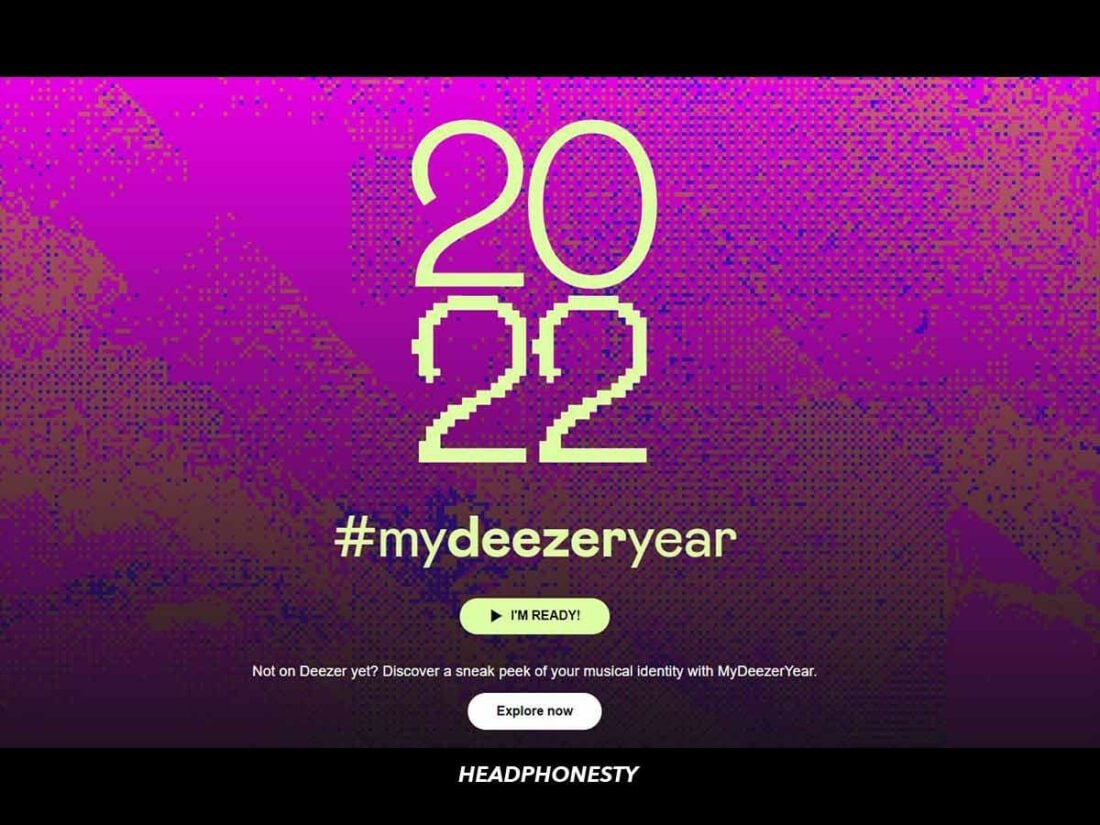
Deezer’s MyDeezerYear is available throughout December, whereas Tidal launched a 2020 rewind, though this hasn’t been repeated. However, you can check out your listening stats in the Activity tab in the mobile app.
In-app social functions
The community in and around a streaming service can be an important consideration for some people when choosing a platform. Getting to interact with other users or even the artists can be an enjoyable part of the experience.
Deezer is a more sociable platform than Tidal in general. You can collaborate with other users on playlists and take part in multiplayer music quizzes with your friends. There are also active Deezer forums where you can interact with other Deezer users.
There are fewer social options on Tidal, though the subreddit is active (and wishing for more community options in the Tidal app).
You can follow other users on both apps, as well as share what you’re listening to on social media. On Tidal, you’re limited to Twitter and Facebook, but on Deezer, you can copy the link to the track, playlist, or album. This lets you share anywhere you can paste the link.
Tidal Magazine
A feature unique to Tidal in this comparison is the Tidal Magazine. This feature is available in and outside of the app, and keeps you updated on music news with access to thousands of unique articles and interviews. This can give you a great insight into the artists behind your favorite music and the stories behind the albums.
Deezer SongCatcher
SongCatcher is a feature in the Deezer app that lets you find a song from just an extract. This means you can find a song that’s playing in the environment around you or by humming what you can remember.
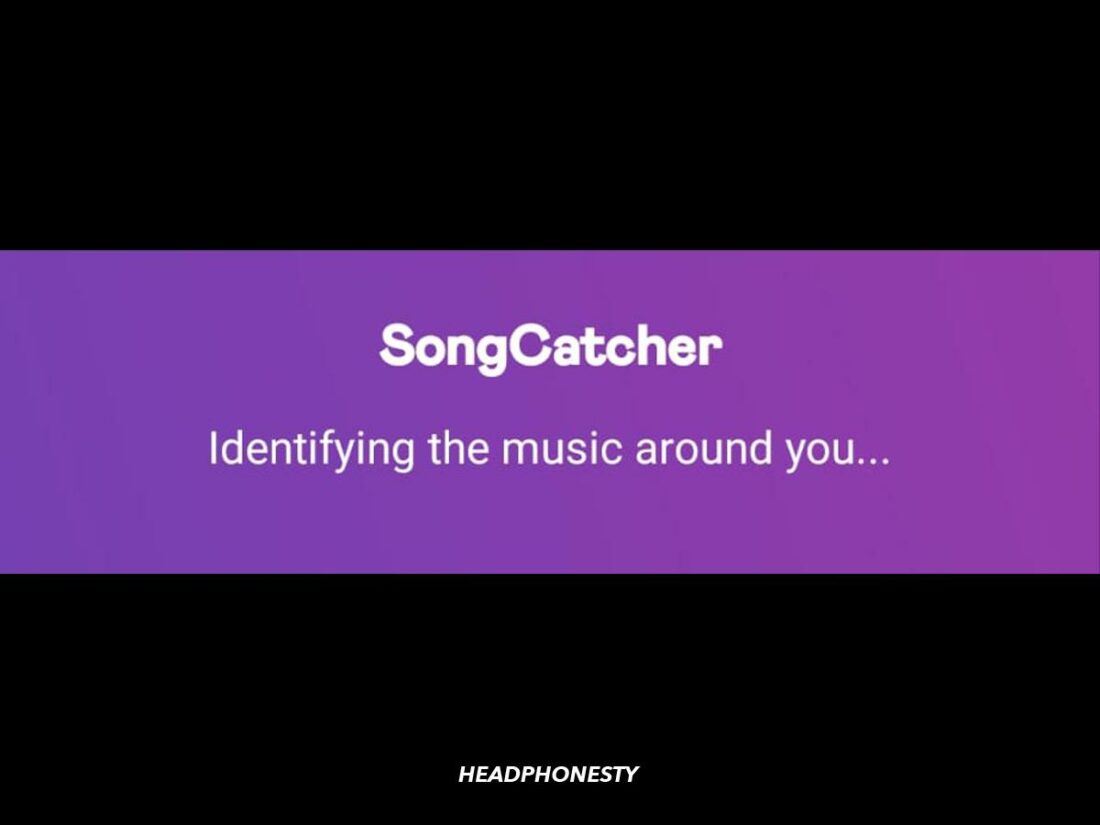
I tested this out with a good number of songs, and it worked every time– even when the audio was distorted by tinny speakers or echoes. This was honestly a really impressive feature, and SongCatcher managed to get it right every time, even with niche songs.
It even managed to identify songs by just the intro before there were any vocals, meaning it couldn’t even cross-reference the lyrics.
This is useful for identifying songs you like but don’t know the name of and is honestly an underrated aspect of the service.
Verdict: Which is more worth it?
In terms of additional features, Deezer just has more than Tidal. Being able to upload local files is pretty important, especially if you’re transferring from another service, and the SongCatcher function is unique.
However, Tidal isn’t slacking in this department either. The magazine and easily-accessible credits make it an artist-focused platform, which is great if you’re interested in the story behind your music.
How Much Do Tidal and Deezer Pay Artists?
An important consideration when deciding which platform to support is how much they pay their artists. Streaming royalties are an important source of income for many artists, so streaming their songs on a platform that pays them properly is a good way to support your favorite musicians.
Here’s how much popular streaming platforms pay their artists:
| Platform | Pay per stream | Streams to get $1,000 |
|---|---|---|
| Tidal | $0.013 | 76,924 |
| Apple Music | $0.01 | 100,000 |
| Amazon Music | $0.004 | 250,000 |
| Spotify | $0.0032 | 312,500 |
| Youtube Music | $0.008 | 125,000 |
| Pandora | $0.0013 | 769,231 |
| Deezer | $0.0064 | 156,250 |
| Qobuz | $0.043 | 23,255 |
Royalties are usually distributed by creating a royalty pool from the profits made in a month. This pool is then split depending on the number of streams the platform has received over that month to create an average payout per stream. The artists then receive their payment based on how many times their tracks have been streamed.
As you can see, Tidal pays a much higher rate than Deezer. However, this could soon be changing, as Deezer has announced that they’re going to pursue a user-centric payment system or UCPS.
A UCPS is when your subscription fee is split between the artists whose tracks you’ve streamed over that past month. This means that your money will only go to the artists you listen to, which can result in a larger payout for your favorite smaller musicians.
Tidal had actually implemented a UCPS but canceled it in April 2023. They claimed that their system still wasn’t paying artists enough and decided to instead invest at least $5 million into their Tidal Rising program. Tidal Rising is a promotional program dedicated to uplifting smaller artists, which helps them gain fans and make more money.
Verdict: Which is more worth it?
Until Deezer updates its payment system, Tidal is the clear winner in this category. Especially with the constant controversy surrounding streaming payouts, Tidal’s commitment to giving artists a fair payout is a great mark in their favor.
Which Should You Go For?
Now that we’ve covered all the different factors to consider when choosing between Tidal and Deezer, which one should you opt for?
Here’s a quick summary of the benefits of each:
| Tidal | Deezer |
|---|---|
| More subscription plans | Available in more countries |
| Highest possible audio option | More podcasts |
| Exclusive videos | Live radio stations |
| Live concerts and events | MP3 uploads |
| Better user interface | Unique music discovery |
| More royalties to artists | In-app social features |
| Tidal Magazine | SongCatcher |
Both platforms are pretty much equal in terms of quality, so the major factor when choosing between them is what your priorities are when streaming.
If you’re looking for an artist-focused platform, Tidal is a great option. There are exclusive videos and live events, and you can check out behind-the-scenes interviews in Tidal Magazine. Additionally, the artists you stream will get a higher royalty rate.
If you’re looking for music exploration and discovery, Deezer is the platform for you. There’s an endless stream of new music based on your tastes, as well as countless podcasts and radio stations that can discuss and recommend new artists and tracks.
Also, the Explore page is extensive, and you can flick through hundreds of different playlists created by Deezer employees and other users.
Conclusion
With this review, you should now know exactly what kind of features and content to expect from each platform. Hopefully, you feel better informed and can make the right choice for you.
Which platform are you going to go for? Is there an important factor that we missed? Make sure to tell us in the comments below!
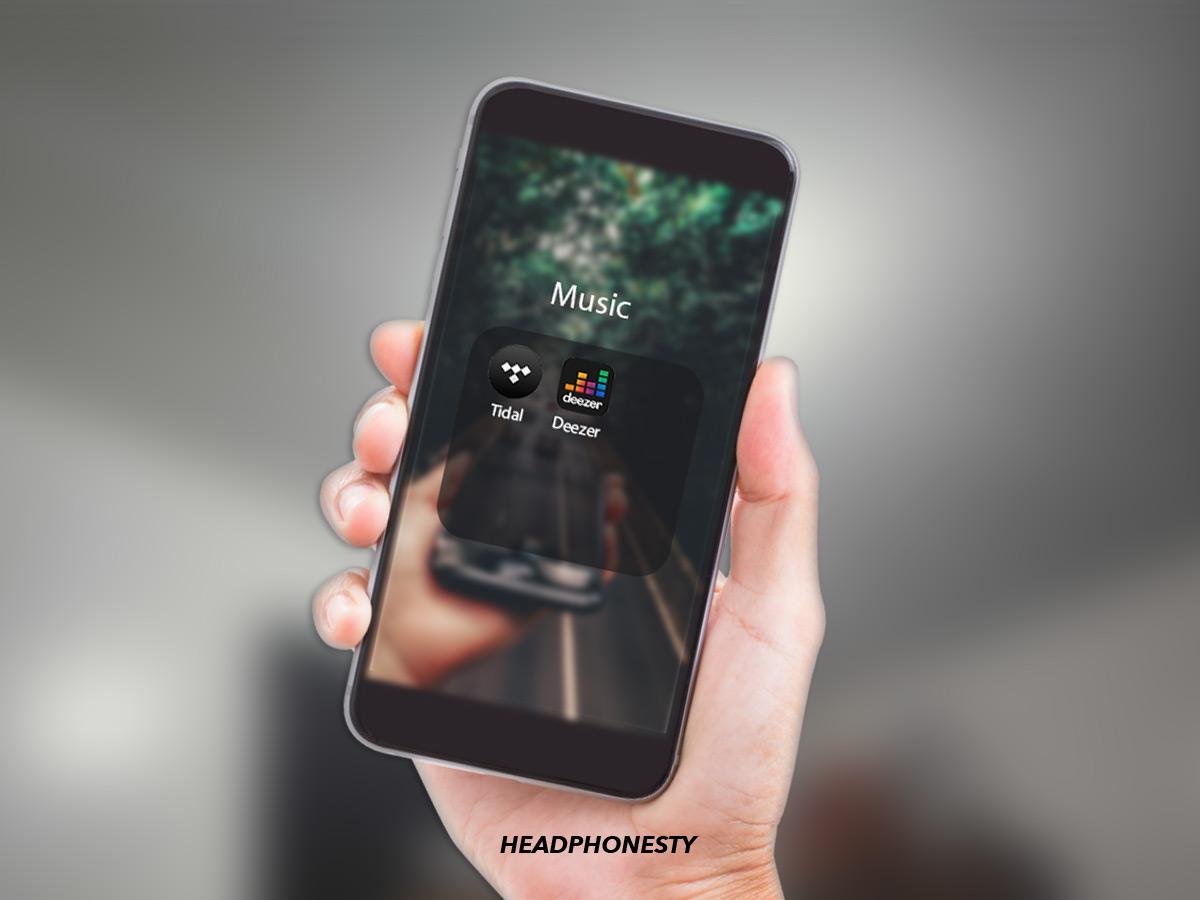
Compatibility with DJ software and decks:
Tidal 9
Deezer 1 (finally)
should defo be mentioned in this review
tidal is not available in the uk on amazon alexa devices . this is what alot of users didnt expect
You claim you heard a difference with HiFi and Master tracks over Bluetooth headphones. Bluetooth is lossy. You experienced a placebo effect from knowing the phone said HiFi/Master.
The idea of Deezer Flow is great, the implementation not so. After a couple of years of use, it just ended up playing the same songs over and over. More frustrating was that it started playing covers of my favourite artists / songs, rather than the original. When I banned the cover artist, it would go out and find an even lesser known cover. The final straw was when it played bad covers of 5 tracks ( all of which I had the original in my favourites list), in the space of 2 hours. Switched to Tidal and haven’t looked back (though I do wish it had something like Flow).